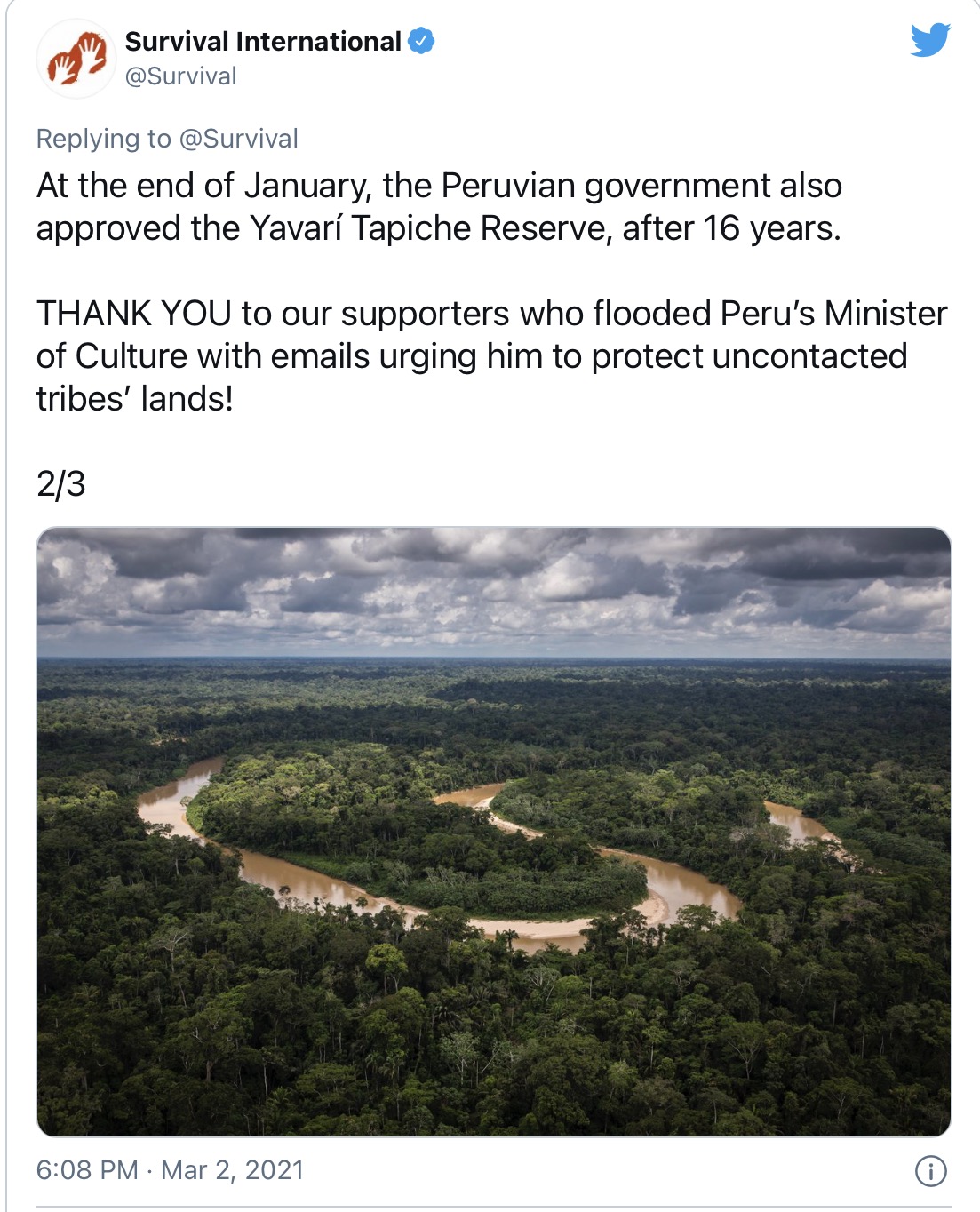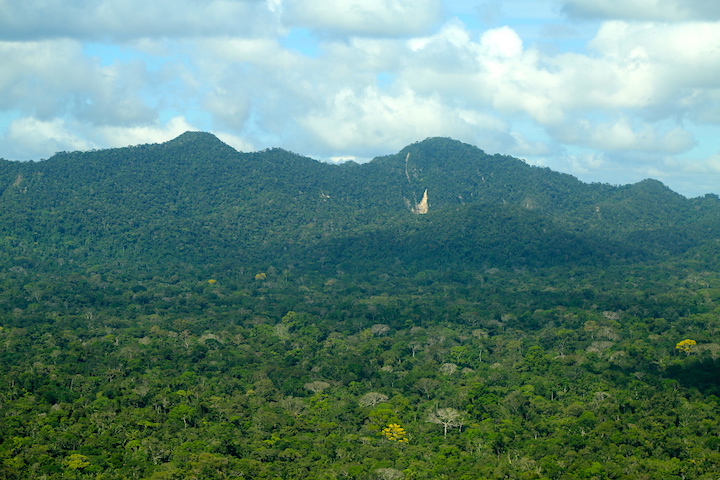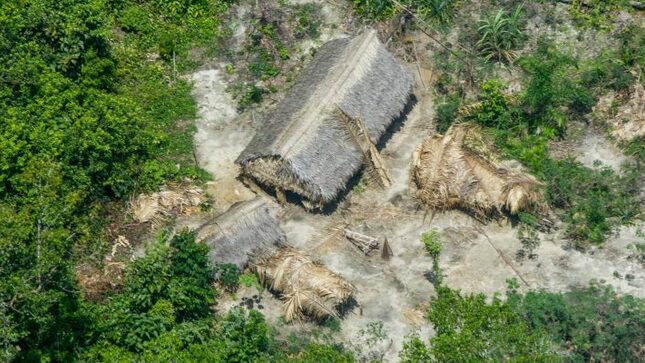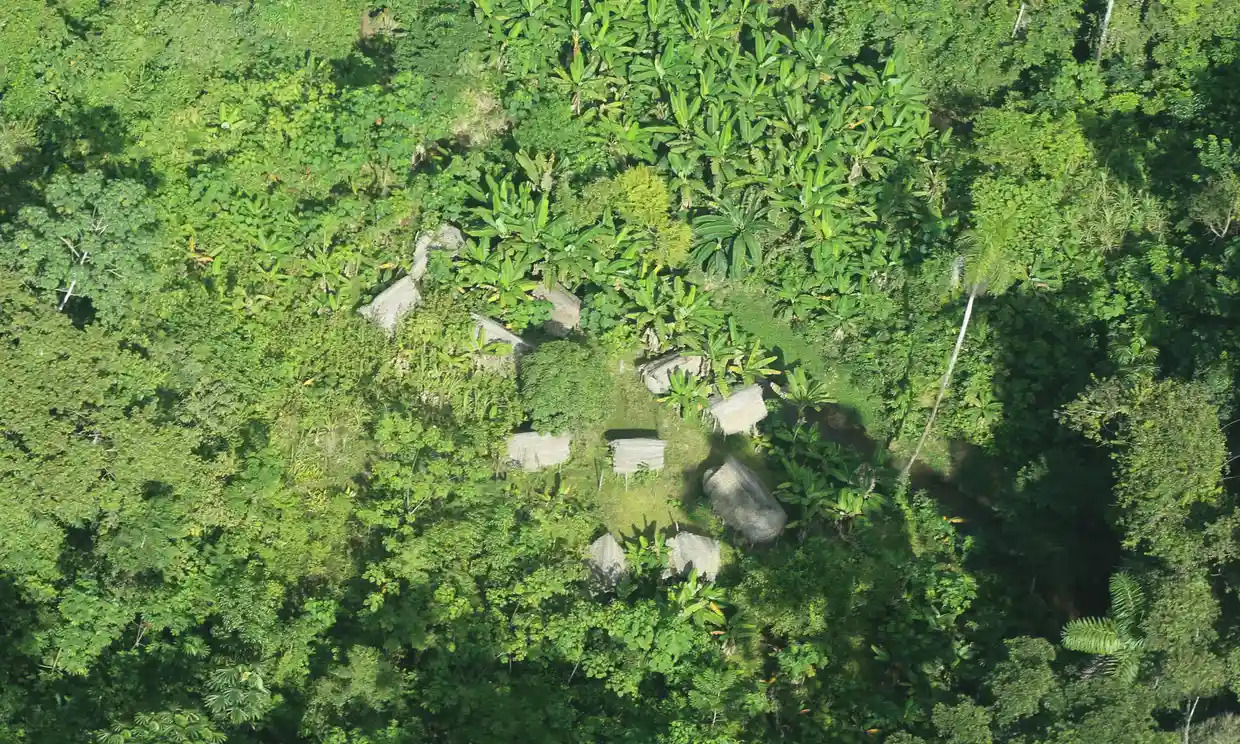
- Inspiring People -
- 4mins -
- 486 views
Peru to establish Indigenous reserve for “uncontacted peoples” deep in the Amazon rainforest
The Peruvian government has officially categorised over a million hectares of rainforest in Loreto region bordering Brazil as the first reserve established under Peru‘s Peoples in Isolation And Initial Contact (PIACI) law.
Peru set to establish rainforest reserve for isolated Indigenous peoples
After almost two decades of negotiations, the Peruvian government has established the 10,000 km² (2.7 million acres) Yavarí Tapiche Reserve for uncontacted peoples deep in the Amazon rainforest. “This constitutes a historic milestone in the protection of the rights of Indigenous peoples in a situation of isolation and initial contact.” — Mongabay

Reserve will be established under Peru’s law governing territories for peoples in isolation
After nearly twenty years of discussion, the Peruvian government has moved to establish a new Indigenous reserve for “uncontacted peoples” deep in the Amazon rainforest. Yavarí Tapiche Indigenous Reserve, which covers 1.1 million hectares (2.7 million acres) in the department of Loreto on the Peru-Brazil border, is home to Matsés, Remo, and Marubo peoples, as well as other groups that have yet to be identified.
Yavarí Tapiche will be established under Peru’s law governing territories for peoples in isolation and initial contact (PIACI). These peoples, sometimes popularly known as “uncontacted tribes”, have little or no contact with the outside world and live in some of the world’s most biologically diverse landscapes, including remote parts of the Amazon Basin.
Under its PIACI law, Peru has defined ten territories for isolated peoples, of which four — including Yavarí Tapiche — have been categorised as an Indigenous reserve by the state. Two others were categorised as territorial reserves before the Piaci Law was approved and must be adapted, while four others are still waiting for the formal creation process to advance.
Source: Mongabay

Sightings of uncontacted people’s in the region go back more than 60 years
The reserves, dubbed Yavari-Mirin and Yavari-Tapiche for short, were formally proposed 15 years ago in Peru’s vast Loreto region but have never been established. Yet a major advance has recently been made. In December 2017 a government Multi-Sector Commission voted to “recognise the existence of the indigenous peoples in isolation” in both the proposed reserves, and recommended that the Culture Ministry take the necessary administrative steps to ensure that a Supreme Decree law doing the same is promulgated.
The Commission’s decision was based on two studies by Peruvian NGO CEDIA, contracted by the Culture Ministry, which presides over the Commission. Both drew on extensive previous research about the people in “isolation” by indigenous federations and others, CEDIA’s own fieldwork – reportedly conducted following United Nations guidelines – and overflights.
Some testimonies go back more than 60 years, according to Commission reports seen by the Guardian. In the Yavari-Mirin study 39% are of direct sightings of the people in “isolation.” In the Yavari-Tapiche study 14% of the testimonies are of direct sightings.
The Yavari-Tapiche study also includes information provided anonymously by local inhabitants who in 2012 and 2013 were contracted as workers during seismic exploration in the proposed reserve, 81% of which is overlapped by an oil concession, Lot 135. This evidence mostly consists of bare footprints – it was photographed, geo-referenced, mapped and recorded in detail, and then passed to CEDIA.
Source: TheGuardian

The history of the Peru’s Indigenous reserves
The history of the creation of Yavarí Tapiche sheds light on the drawn-out nature of establishing Indigenous reserves in Peru, reports Mongabay.
Since the application for Yavarí Tapiche was submitted in 2004, there have been many delays and postponements. The first was the enactment of the PIACI law in 2006, which established new processes and conditions to set up reserves for isolated peoples. That law however wasn’t enacted until 2011 and the commission established to evaluate the applications didn’t start until a year later. Then there were objections from companies operating in the area.
In 2013, Yavarí Tapiche obtained a favourable rating from the state, but received opposition from oil companies operating in that territory and there was a setback. They had to press hard for the Ministry of Culture to move forward. It was only in 2015 that the necessary studies were carried out to establish the reserve. ORPIO [Regional Organisation of Indigenous Peoples of the East] presented solid evidence of the presence of Indigenous peoples in isolation.
In March 2018, the supreme decree that recognised PIACI’s presence in this territory was issued. And three years later the categorisation process was finished. The process took 17 years.
The Ministry of Culture says Yavarí Tapiche is the first to be established after the approval of the PIACI Law.
“It constitutes a historic milestone in the protection of the rights of Indigenous peoples in a situation of isolation and initial contact,” the ministry said in a statement sent to Mongabay Latam.
The ministry said the establishment process is continuing for other proposed and pending reserves for isolated peoples. But for efforts to secure the territory of Indigenous peoples in isolation in Yavarí Tapiche, the two decade wait is almost over.
Source: Mongabay


